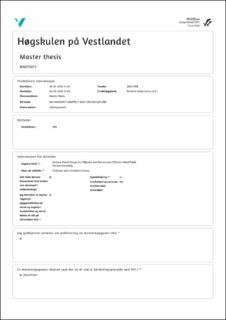| dc.description.abstract | Offshore wind energy is an important source of power and has an abundant volume of reliable clean energy. The installation and decommissioning of offshore wind parks do require elaborate project planning for safety and cost implications. Meanwhile, the research under investigation was on the vessels required for offshore wind parks decommissioning. A conceptual design of the decommissioning vessels was proposed to ensure sustainability, efficient, safe, and economically viable offshore wind park operations. The concept was referenced in line with the existing wind turbine installation vessels (MPI resolution) i.e. the jack-up vessels and the Floating production storage and offloading (FPSO) vessels used in the oil and gas industry. The decommissioned turbines would be plastically deformed or processed mechanically into metal sheets or plates (i.e. increased surface area) then store in the storage chamber. These unique methodologies would ensure maximal usage of deck space, the volume of the chamber and reduce vessel logistic cost especially when decommissioning offshore wind parks with a large number of turbines of at least 100 units
Furthermore, the Thanet offshore wind park decommissioning project was taken as a case study and references made to the specific turbine parameters e.g. weight, height, and configuration of components, field characteristics i.e. (weather condition), vessel requirements, operations sequence, etc. The proposed conceptual vessel design for decommissioning tasks has a capacity to remove, lift, store and transport at least 20 wind turbines to the port after the components have been processed to sheets or scrap plates for vessel space management. The main advantage of this vessel is the reduction in project or operations time and cost. The two models of vessels suggested for the decommissioning operations were the floating, processing, and storage vessels (FPSV) and jack-up, processing, and storage vessels (JPSV) respectively. It is envisaged that the two models met up with the technical, functional, and operational requirements in an efficient and sustainable manner. | en_US |

